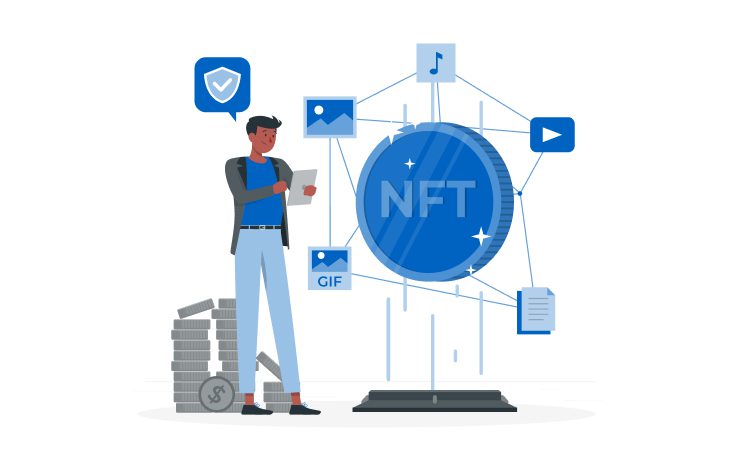
NFT Marketplace Development: Design, Challenges, and Tips



In early 2021, the NFT suddenly came into the spotlight. Just think, the most famous NFT art was sold for 70 million dollars! It’s amazing, isn’t it? At the same time, OpenSea became the most successful NFT marketplace, which provided the possibility of the simplest possible purchase and sale of any NFT. This article will tell you how to create a successful NFT marketplace, what challenges you can meet, and how you can monetize it.
Content
The non-fungible token, or NFT, is a type of digital asset that is not transferable and it combines digital certification to track digital asset ownership. By creating a powerful trading platform – NFT Marketplace, buyers can purchase virtual products using cryptocurrencies such as Ethereum and Bitcoin.
The NFT marketplace is a fully decentralized and open platform where artists, musicians, and businesses can register to monetize their work. As a result, more brands are moving to NFT platforms. Among them are Gucci, Prada, Adidas, Disney, McDonald’s, Samsung, Visa, NBA, Marvel, Time Magazine, etc.

According to OpenSea, which has more than 90% in the NFT market, the activity of the industry is becoming cyclical with its downturns and falls. The rise in activity is associated with triggers, which are some events that attract attention.
When technology giants take advantage of NFT, their business continues to grow rapidly. That is why the idea of building an NFT marketplace attracts many entrepreneurs, and they should understand what these NFTs can represent legally.
Blockchain technology of the NFT marketplace unlocks the potential of the network. Any business can have a wider range of options as profit from its virtual items. You can benefit from the use of NFT and greatly increase your value.
Paintings and memes are among the most common digital art commercialized by NFTs. But arts, music, and clothing brands are not the only field of application for non-fungible tokens.
Marketplaces can also be used to trade collectible cards, magazines and newspapers, real estate, investment offers, and any other area where you can tokenize ownership of anything.
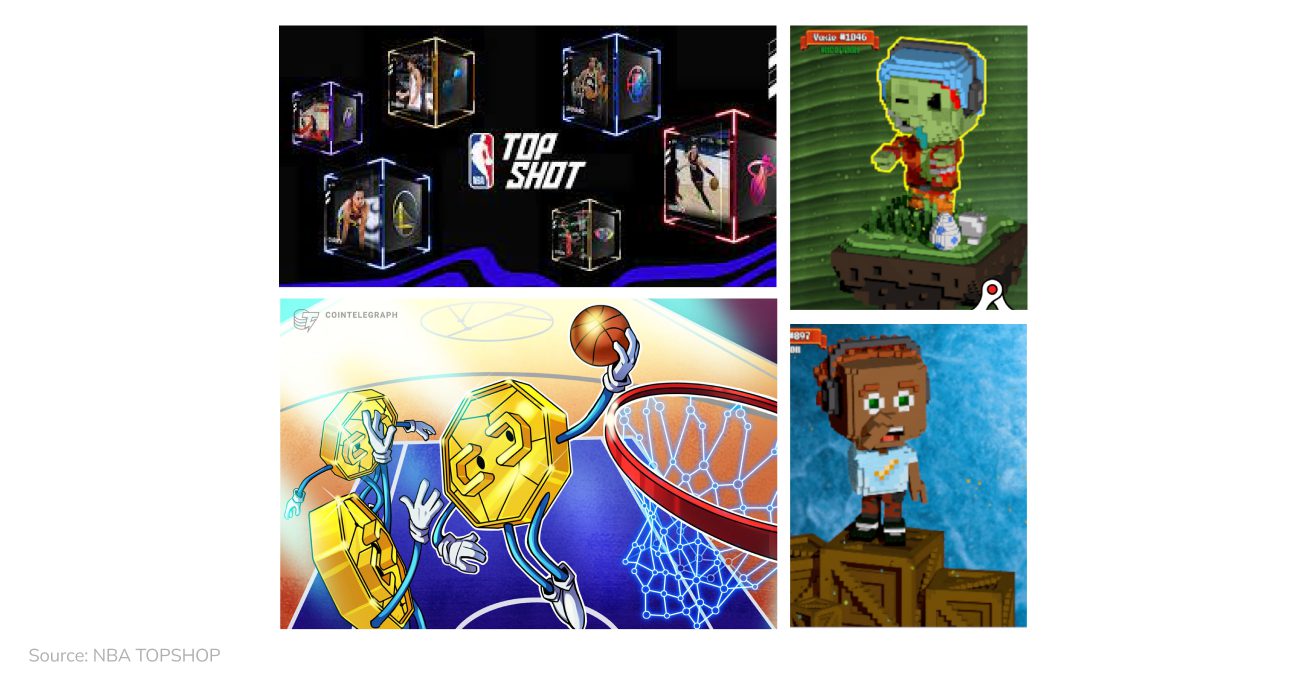
The main principle is to create a marketplace that will be able to work with the right of ownership.
For example, suppose you want to develop an NFT marketplace for arts. In that case, you need to create a regular online store, the server part of which should be able to produce, store, sell, and change NFT. This is relatively simple.
If you need an NFT real estate platform, make a Zillow-like service. MLS databases and state databases and state registers databases should be compatible with such sites. Also you need to determine the user’s location, etc.
So the type of business for NFT marketplace development does not matter. When developing a successful NFT marketplace, make sure it provides reliable protection, wide opportunities for users (token creation, trading, auctioning, various events, tools for attracting customers, etc.). Check if transactions are carried out on the principle of trading marketplaces, such as Amazon, AliExpress, etc.
Before starting NFT marketplace development, you need to consider its type.
NFT is determined by their rarity: Rarity is what makes non-fungible tokens useful. They’re created on a blockchain, which means they’re linked to unique data. All the distinctive features of NFT make it potentially profitable. No changes or substitutions will affect the uniqueness of blockchain-based NFT. As a result, NFT proves that their authenticity is one of the most desirable attributes.
NFT cannot be distributed: Another major advantage of non-replaceable tokens is their ability to prove ownership. Because non-replaceable tokens work in a blockchain, they help link ownership to only one account. They cannot be distributed and given to owners. The advantage of single NFT ownership is that it prevents clients from copying NFT.
It is believed that startups should have some specialization. Still, the founders of OpenSea – Devin Finzer and Alex Atallah, have succeeded by building a marketplace for creating and trading all kinds of NFT, such as art, music, or games. Now they are close to becoming billionaires.

To develop your own NFT marketplace, let’s look at the most successful marketplaces and their specifics.
Due to the ease and convenience of usage – OpenSea takes the leading position in the rankings of NFT Marketplaces. It’s the first and the biggest NFT platform. In order to enter the site, it is enough to have an electronic crypto wallet: MetaMask, Coinbase Wallet, or Opera Touch.
The main specifics of this marketplace:
The auction marketplace is aimed for digital artists and collectors. Since its launch in early 2021, more than $100 million of tokens have been sold on the platform. You can get to the marketplace only by invitation from the platform member. The opportunity to send an invitation only to participants with a high rating on the site.
The main specifics are the following:
This marketplace is great for beginners, with a clear and simple interface. But the main feature is that your works can be exhibited free of charge and without commission. You can create your own token store as an alternative to collections.
The platform allows you to monetize any electronic assets. To buy or sell, you will need a crypto wallet. Specifics that make this marketplace successful:
A blockchain technology for non-fungible tokens, an online store platform, and an auction are all combined into the NFT marketplace. Any person can be an author of an NFT product and sell it anytime. The successful NFT marketplace has some features to make it profitable and attractive for users.
So if you want to start NFT marketplace development, go to planning what features your marketplace will have:
This feature provides visitors to the trading platform with all the necessary information about the lot: its full description, characteristics, what method of purchase can be used, etc.
To help consumers authenticate the purchased NFT, certain NFT marketplaces additionally publish details on the blockchain and token protocol.

On the client’s side, NFT marketplaces operate as normal online stores. The user creates a personal digital wallet on the platform to store NFTs and cryptocurrencies. Once the listing is available, users can either purchase NFTs or create tokens.
Running NFT is usually simple and similar to creating an eBay advertisement. Provide a description, name, image, photos, videos, price, gifs, etc.
Provide easy access to the object of interest for your users. Users will find it easier to navigate the store listing if all assets are divided into several categories, such as art, games, photos, videos, memes, and music. Additionally, filters simplify navigation, particularly for items of the same type.
It is necessary to make an account on the platform in order to buy or sell NFT. A mobile number, an email address, or a social media account is usually required for registration. In addition to specifying the cryptocurrency address, the user is usually asked for it as well. If it does not exist, it is proposed to register using links to cryptocurrency wallets.
This procedure should be easy to complete quickly, like the eBay process. You must consider the ideal user path and develop a process similar to OpenSea collection manager in order to do this. It helps you quickly upload the product to the site and specify the token’s attributes, including full description, links, tags, price, etc.
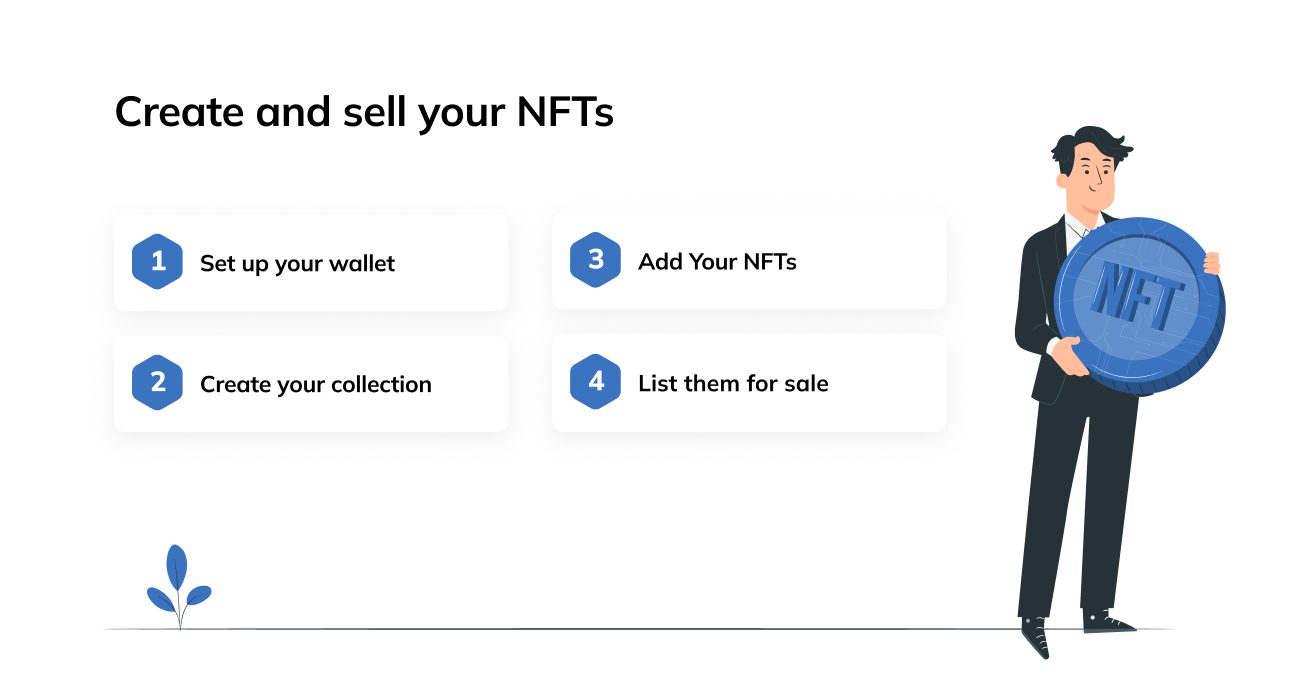
Normally, the user should have access to the NFT platform, where they may check trading history. In order for them to comprehend the website’s popularity, what NFT items are there, and how much it costs. You can use as an example OpenSea trading history with main features: event, product name, price, buyer, seller.
This feature demonstrates NFT items in order from the best to the least. This information helps users to estimate counterparties and specific lots. Usually, the rating is realized in the form of a numerical rating of goods.
It’s very important for ratings to add reviews, which has two forms – comments and the form of reviews that the counterparties leave to each other about the person after the transaction is completed.
You can implement push notifications to inform users about new bets in the selected category or from the selected vendor, status changes of the selected product, new messages, sale of your own lot or the NFT trading platform update.
An important element of any trading platform. With the help desk, users will be able to answer questions, solve problems and conflicts. Support can be implemented as a call center, support via email, a separate information portal, or by using a help bot.
The most common way to sell NFT tokens is through an auction. The lot is placed on site and sold at the highest price. It should be possible to set the auction start and end date, the minimum price at which the token can be sold, and the minimum bet step. Unlike a fixed price, the auction will be able to monetize your token as much as possible.
Classic NFT marketplace implements work through blockchain technology, which stores all transactions of participants in a marketplace. It’s a big chain of blocks where the information is recorded. And if on the server the information is stored in one physical place, then on blocks, it is stored on many devices in different places.
This makes blockchain a reliable way to store data. All cryptocurrencies run on blockchain platforms. Nowadays, there are many blockchain platforms, including Ethereum and Binance Smart Chain – only a few of them. In addition, as any software evolves, new blockchain projects appear with less power consumption, easy use, and scalability.

A smart contract plays the same role as a conventional paper contract, only in the digital world. Terms are written as an algorithm. After successful transactions, smart contracts are written into the blockchain code. This makes them non-negotiable and binding on participants.
You can buy and sell NFT tokens through cryptocurrency. Then you will need integration with cryptocurrency. It does not work as a physical wallet but provides access to assets that are stored in the blockchain.
The information about the token holder comes through the crypto wallet number. When choosing a wallet, it is important that it be compatible with the desired blockchain platform. But as we’ve seen from the examples of NFT marketplaces, some marketplaces allow you to buy and sell tokens for regular money.

At the first stage of NFT marketplace development, you and the team need to examine the details of your project to assess the technical feasibility and viability of the project. Here you should ask yourself questions.
Try to answer these questions to understand the direction of the whole development process and help you develop the specifications for creating an NFT trading platform. You can delegate this process to the development team from the outsourcing company, if this stage will be difficult.
The team from the outsourcing company is preparing a presentation and some technical documentation according to your idea.
NFT marketplace development requires more work. If you choose a ready-made solution, the cost of the marketplace will be relatively lower. On the other hand, you cannot make it individual, and it may cause you to pay hidden costs.
So you understand the initial characteristics of your NFT marketplace. What is next? Think about its business value with the help of some factors listed below:

Want to know how to create an NFT market? The first thing you need to know is what type of monetization model you will implement on your platform. Here are some of them:
Subscription Monetization Model: The subscription business model is best if you want to get enough traffic. According to this model, a subscription fee is usually charged to get a double income. It may include both monthly and annual costs charged using the platform over a period of time.
Commission Monetization Model: This is one of the most commonly used models. Since the model can generate income, it has now become the most popular option. With this model, NFT platform owners can charge suppliers for successful transactions across the platform.
Once the initial concept and specifications are ready, the development team can draw up a development plan to indicate the estimated time frame and budget of the project. Then you can start designing.
Freemium Model: As part of this well-known model of monetization, platform owners can offer both paid and free services. In short, owners can earn money by charging sellers for bonuses.
Advertise Monetization Model: While commission-based income model allows you to receive payment after the sale is completed, this model ignores commission for less popular items. The product listing model is superior in this area because it gives you a profit from every advertisement or product placed on the platform of the marketplace.
When all technical requirements and development plan are agreed, the NFT marketplace development company can start work. Firstly, you need to think about the design of the user interface (framework, layouts and prototypes) with a description of user threads and site functions. An effective trading platform architecture is also being developed.
UX / UI-design. The navigation and appearance of the user interface are very important in the NFT marketplace development, as it is the first impression, usability and user experience in general. So make sure that your site design will please your audience and will be simple enough for anyone who is at least a little familiar with Amazon and Ebay.
Back-end and smart contracts. At this stage, the entire internal (server) part of your trading platform works. In its development, in addition to the usual business logic and functionality of the marketplace, you should implement work with blockchains, smart contracts, wallets and provide the auction mechanism (most NFTs are sold with it).
Front-end. This is the whole external part of the trading platform, which is responsible for interaction with the end user. The main task of front-end development is to provide easy control as well as reliability and performance.
Here is an example of a technology stack for a frontend NFT market place:
In this step, several code testing cycles are performed to ensure that the platform is running correctly. The QA command runs several tests to ensure that your project code does not contain critical bugs. In addition, the content, usability, safety, reliability and performance of all possible platform scenarios are checked.
You need to follow following guidelines:
When the platform is tested, it is time to deploy your NFT platform on the server (cloud). Please note, that this is not the last step, as you will also need to organize support. In addition, it is also necessary to plan further development of the platform to follow market trends and user expectations.
A well-designed NFT marketplace will allow to establish a close relationship between the seller and interested user, and will provide a place for trade offers. A digital catalog and a personal account will be available for users to handle the most secure and fast transactions.

The cost of NFT marketplace development depends on the functionality of your future NFT project and the country of team development.
| Functions of NFT marketplace | Hours to build an average size of
NFT marketplace |
| UX/UI | 42 hours |
| Authorization and security | 72 hours |
| Users profiles | 42 hours |
| Homepage | 84 hours |
| Search, Categories and Filters | 96 hours |
| Reviews and Ratings | 42 hours |
| Product Page | 42 hours |
| Buyer’s Dashboard | 112 hours |
| Payments | 42 hours |
| Integration with the Ethereum | 96 hours |
| Notifications | 32 hours |
| Seller’s Dashboard | 132 hours |
| NFT Management | 96 hours |
| Administrator’s Dashboard | 82 hours |
| Total | 1020 hours |
If you are planning to create a successful NFT marketplace such as OpenSea, outsource the NFT marketplace development services. You automatically reduce the risks associated with the NFT marketplace development. The responsibility for poor staff selection rests with the outsourcing company.
Moreover, you can also be calm about the quality and timing of the tasks, because these concerns are also completely transferred to the nft marketplace development company.
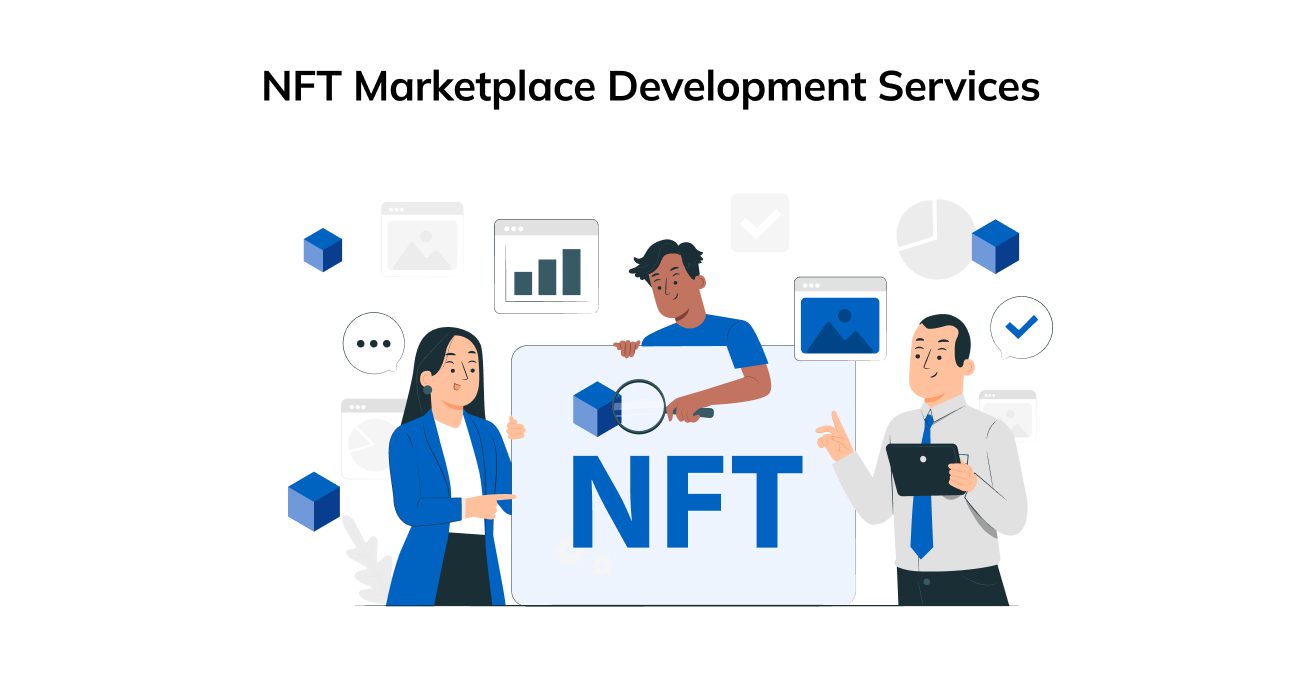
Advantages of NFT marketplace development services by Glorium Technologies:




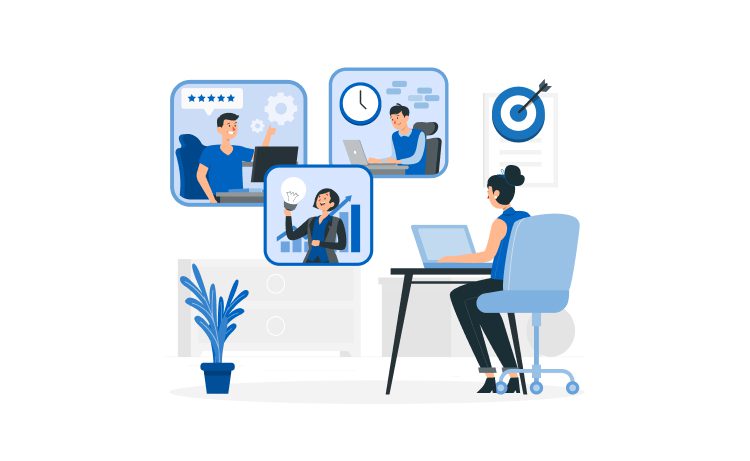



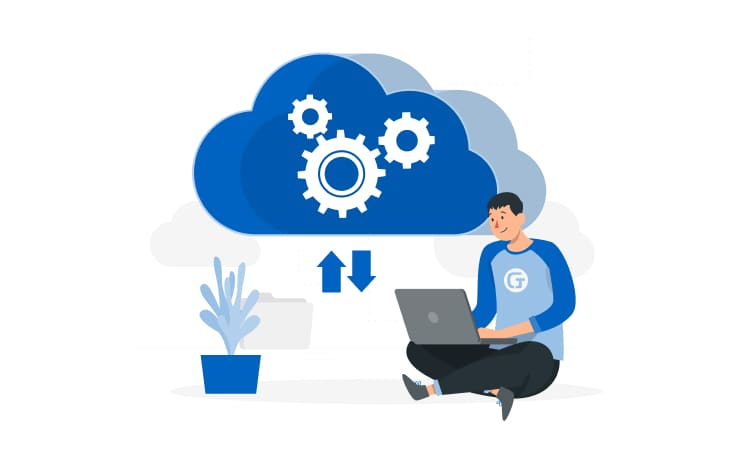
| Cookie | Duration | Description |
|---|---|---|
| cookielawinfo-checkbox-analytics | 11 months | This cookie is set by GDPR Cookie Consent plugin. The cookie is used to store the user consent for the cookies in the category "Analytics". |
| cookielawinfo-checkbox-functional | 11 months | The cookie is set by GDPR cookie consent to record the user consent for the cookies in the category "Functional". |
| cookielawinfo-checkbox-necessary | 11 months | This cookie is set by GDPR Cookie Consent plugin. The cookies is used to store the user consent for the cookies in the category "Necessary". |
| cookielawinfo-checkbox-others | 11 months | This cookie is set by GDPR Cookie Consent plugin. The cookie is used to store the user consent for the cookies in the category "Other. |
| cookielawinfo-checkbox-performance | 11 months | This cookie is set by GDPR Cookie Consent plugin. The cookie is used to store the user consent for the cookies in the category "Performance". |
| viewed_cookie_policy | 11 months | The cookie is set by the GDPR Cookie Consent plugin and is used to store whether or not user has consented to the use of cookies. It does not store any personal data. |